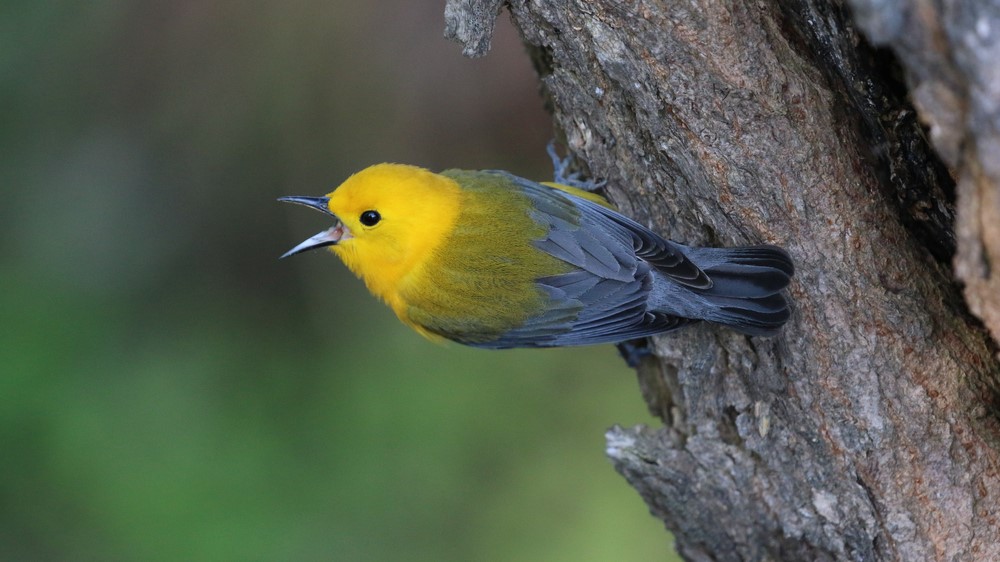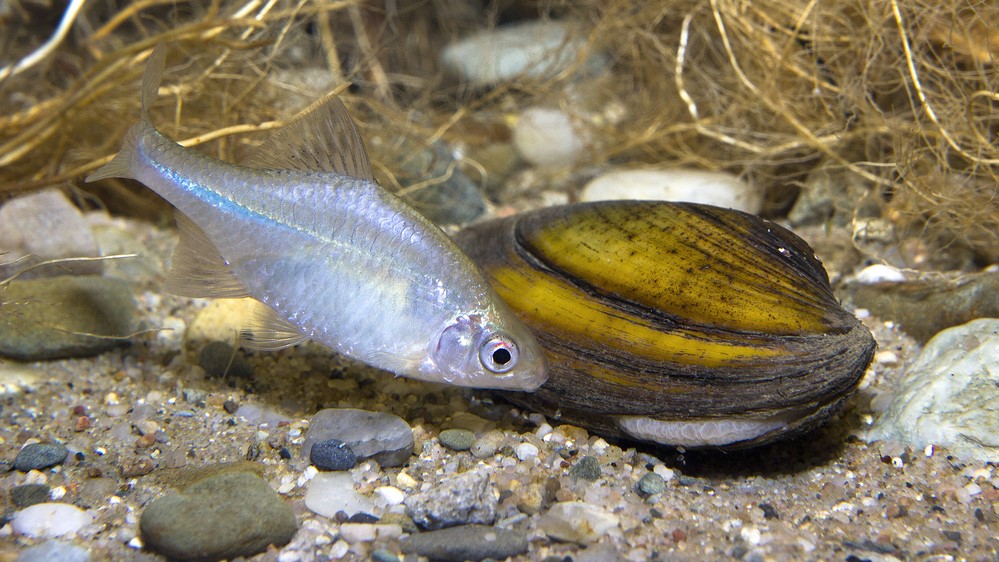Scientists officially list 23 species as extinct, including the largest woodpecker in the US
Is the ivory-billed woodpecker really extinct?

The U.S. Fish and Wildlife Service (USFWS) has removed 23 species from those protected under the Endangered Species Act because they have not been seen in the wild for decades, meaning they are most likely extinct.
The delisted species include the ivory-billed woodpecker (Campephilus principalis), which was formerly the largest woodpecker in the U.S., reaching a max height of 20 inches (51 centimeters), as well as 10 other birds; eight freshwater mussel species; two freshwater fish species; a fruit bat species; and a plant species, according to a USFWS statement.
These species had been listed as protected under the ESA since at least 1993, with several having been included in the very first draft of the ESA in 1973. Under the ESA, listed species and their habitats are protected and receive funding to ensure their continued survival. However, only one of the delisted species has had a confirmed sighting this century, and 21 of the 23 species haven't been seen since 1990, according to the USFWS.
Related: Wipe out: History's 7 most mysterious extinctions
"Each of these 23 species represents a permanent loss to our nation's natural heritage and to global biodiversity," Bridget Fahey, the USFWS biologist in charge of classification for the ESA, told The New York Times. "And it's a sobering reminder that extinction is a consequence of human-caused environmental change."
However, some experts believe that certain species, particularly the ivory-billed woodpecker, may have been delisted prematurely.
Disappearing birds
Birds are most represented among the newly delisted species, as they have been hit hardest by habitat loss, according to the USFWS.
Sign up for the Live Science daily newsletter now
Get the world’s most fascinating discoveries delivered straight to your inbox.
One of the most notable is a small, yellow bird called the Bachman's warbler (Vermivora bachmanii). The species was formerly found in Florida and South Carolina and migrated to Cuba in the winter and has not been seen in either country since 1988.

"Most of these [bird] species have long been suspected of being extinct," John Fitzpatrick, former head of ornithology at Cornell University, told Live Science. "The Hawaiian birds, especially, are definitively gone, so it makes sense to list them as extinct."
For example, the Kauai nukupuu (Hemignathus hanapepe) from Hawaii has not had a confirmed sighting since 1899 and can be identified only from paintings, according to the USFWS. However, Fitzpatrick disagrees that there is sufficient evidence to give up on another species: the ivory-billed woodpecker.
"In my opinion, sufficient doubt remains about the woodpecker, that listing it as extinct now is grossly premature," Fitzpatrick said.
The USFWS lists the last date of a confirmed ivory-billed woodpecker sighting in the U.S. as 1944. However, the USFWS has overlooked numerous unconfirmed sightings, including in photographs, as well as secondhand evidence, such as feathers, to suggest that these birds were alive until at least the turn of the century, Fitzpatrick said.
In 2005, Fitzpatrick led a study, published in the journal Science, that announced the rediscovery of the ivory-billed woodpecker, after several reported sightings and an analysis of video captured in Arkansas.
The ivory-billed woodpecker "has always been a very elusive species, and if it exists at all today, its numbers are extremely tiny, limited to difficult places to investigate, and behaviorally evasive," Fitzpatrick said. "But this species is by no means definitively extinct and, therefore, should not be listed alongside all the other species that really are."
Even so, a lot of expeditions to search for the ivory-billed woodpecker have come up empty-handed, Elizabeth Bennett, Vice President, Species Conservation at the Wildlife Conservation Society, told Live Science.
Delisting species has pros and cons, of course. "It raises awareness that things really are going extinct, including these big spectacular things that we really care about like the ivory-billed woodpecker," that are also vital to the ecosystem, Bennett said. "But the downside is that it means any action and funding if those species do reappear is going to be hard to mobilize again."
Freshwater failures
Some of the most notable freshwater mussel species now considered extinct are the flat pigtoe (Pleurobema marshalli), formerly found in Mississippi, and the southern acornshell (Epioblasma othcaloogensis), formerly found in Alabama, Georgia and Tennessee.
The southeastern U.S. has historically been a hotspot for freshwater mussel diversity and is home to more than half of global freshwater mussel species, according to USFWS. However, freshwater mussels require healthy rivers with clean water to survive and pollution from agricultural runoff and increased sediment input from climate-change-induced changes in rain and snowfall have affected river ecosystems significantly.

In December, a study using satellite imagery revealed that a third of U.S. rivers have changed color significantly over the past 36 years, turning from blue to yellow and green, which indicates that their water quality has decreased Live Science previously reported.
Similarly, the two freshwater fish species that the USFWS says have gone extinct — the San Marcos gambusia (Gambusia georgei), from the San Marcos River in Texas, and the Scioto madtom (Noturus trautmani), from the Scioto River in Ohio — are believed to have suffered from ecosystem changes in their native rivers, according to the USFWS.
Isolated islands
Just under half of the recently delisted species were endemic to Hawaii and the Pacific Islands — nine from Hawaii, and two from Guam, including the Little Mariana fruit bat (Pteropus tokudae), also known as the Guam flying fox.
Extinctions in Hawaii and Guam are not surprising; species endemic to islands face a heightened risk of extinction due to their isolation and small geographic ranges, according to the USFWS.
As a result, more than 650 species protected under the ESA are endemic to Hawaii and the Pacific Islands, the most of any U.S. state, according to the USFWS.
"It's heartbreaking that Hawaii is known as the extinction capital of the world," Maxx Phillips, director of the Center for Biological Diversity's Hawaii program, said in a statement. "Despite making up 30% of the nation's listed species, our incredibly rare Hawaiian plants and animals receive less than 10% of the money appropriated for recovery."
Originally published on Live Science.

Harry is a U.K.-based senior staff writer at Live Science. He studied marine biology at the University of Exeter before training to become a journalist. He covers a wide range of topics including space exploration, planetary science, space weather, climate change, animal behavior and paleontology. His recent work on the solar maximum won "best space submission" at the 2024 Aerospace Media Awards and was shortlisted in the "top scoop" category at the NCTJ Awards for Excellence in 2023. He also writes Live Science's weekly Earth from space series.










